Top 10 Most Beautiful Historical Sites In Jordan
Jordan is a young state on an ancient piece of land that bears the imprints of many distinct cultures, religions, and political systems in the form of ... read more...intriguing places. Here is a list of the most beautiful historical sites in Jordan that you should not miss while in the area.
-
Petra is a well-known ancient location in Jordan's south. Until 1812, all but the Bedouins knew about Petra's amazing monuments, which are now regarded as one of the world's marvels. The once nomadic Kingdom of the Nabataeans founded Petra. The Nabataeans settled and built Petra their capital by carving a city out of the sandstone rocks and cliffs.
The amazing remains of Petra cannot fail to excite visitors. Intricate temples and tombs erupt from the rocks and cliffs, together with later modifications from the Roman era and even a mosaic-adorned Byzantine cathedral. The Treasury, Petra's most spectacular and well-preserved landmark, is the first site that most visitors see. The Treasury, which is made up of an intricate façade hewn from the rock, is likely to date back to the first century BC. If the façade looks familiar, it's because it was featured prominently in the film 'Indiana Jones and the Last Crusade.' Unfortunately, the interior of this monument does not live up to the expectations set by its facade - it is surprisingly empty.
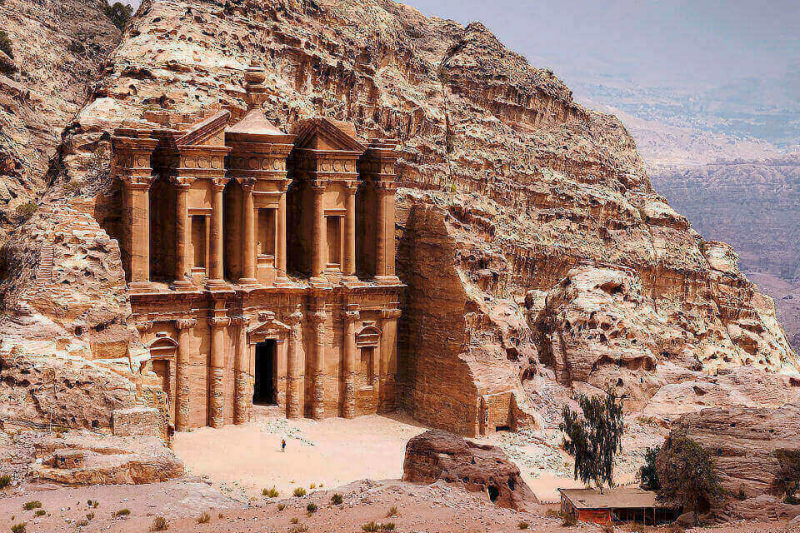
dammedulich.com 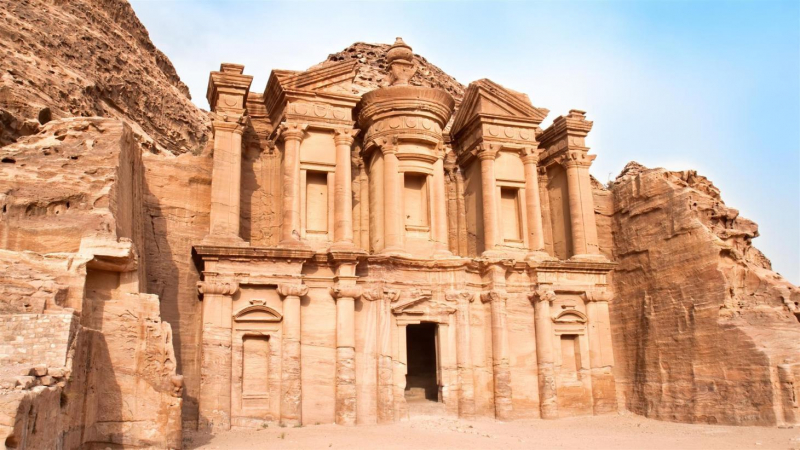
agoda.com -
Jerash is one of the best preserved ancient Roman sites in the world. Jerash, formerly known as Gerasa, is thought to have been inhabited since the Neolithic Era. However, it is the spectacular Roman city created in Jerash that has made the most of an impression on the area, becoming Jordan's second most visited tourist site after Petra.
Following General Pompey's conquest of the region in 64 BC, Jerash became part of the Roman province of Syria. Later, it became one of the ten cities of the Decapolis league, flourishing and increasing wealthier over the two centuries of Roman control.
During this period, Jerash experienced many rounds of reconstruction, the majority of which took place in the first century AD. One such incident occurred in 129 AD, following the Emperor Hadrian's visit. Following this visit, Hadrian's Arch, also known as the 'Triumphal Arch,' was built, the remnants of which may still be seen in the southern portion of Jerash outside the archeological park.
By the third century AD, Jerash had achieved its zenith as a prosperous commercial center with a population of up to 20,000 people, earning it the designation of colony. However, this success was soon followed by Jerash’s slow downfall.
Several events during the ensuing decades contributed to Jerash's decline, including the destruction of Palmyra in 273 AD, pillaging of its temples to build Christian churches under Emperor Justinian in the 6th century, and Muslim invasion of the region in the 7th century. This was aggravated further by an earthquake in 747 AD. In truth, despite a brief Crusader occupation in the 12th century, Jerash had collapsed and was forsaken by the 13th century.
Tourists go to Jerash to explore the enormous and spectacular remains, which include the Temple of Artemis and the Forum with its large ionic columns. The Cardo, Jerash's original main thoroughfare, runs through the center of the complex and is intriguing in its own right, with evident chariot markings and an underground drainage system. Other must-see attractions in Jerash are the 3,000-seat South Theatre and the Nymphaeum fountain.
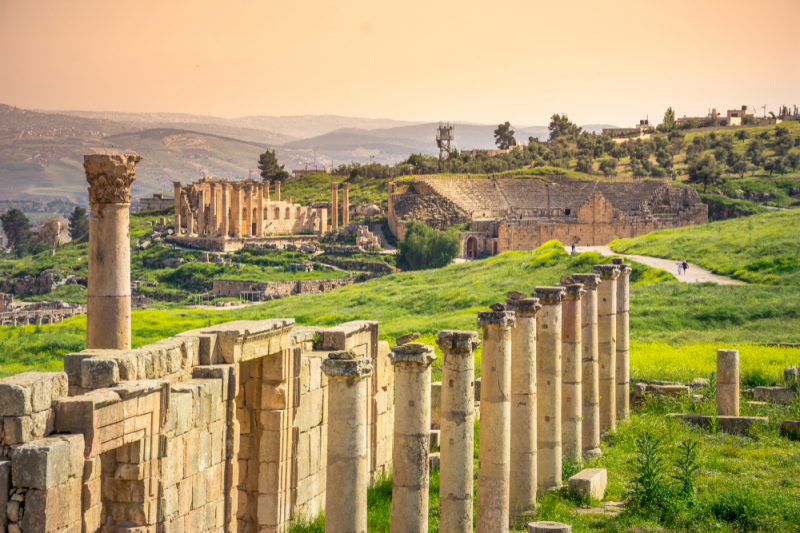
kaleela.com 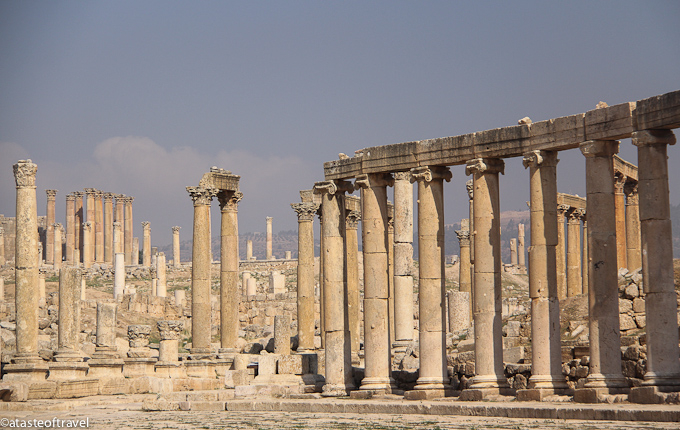
atasteoftravelblog.com -
Qasr Bashir is a Jordanian desert Roman fortification that has been extraordinarily well preserved. Unlike many Roman ruins, Qasr Bashir was never rebuilt by subsequent civilisations, hence the ruins on the site are original.
As the empire extended eastward, so did the need for defenses along the Arabian border, known as the Limes Arabicus. Jordan's natural terrain played a significant role in defense, with wide swaths of parched desert acting as a natural barrier. Nonetheless, desert forts and troops were stationed along them, in part to establish relations with and defend against the indigenous nomadic people.
Built at the beginning of the fourth century AD and known as Mobene, the walls of Qasr Bashir still stand intact, reaching up to 20 feet in places, and the main entrance still stands. The massive corner towers continue to rise two storeys above the earth.
It is possible that Qasr Bashir was initially home to an auxiliary cavalry force tasked with protecting the Roman frontier and keeping the surrounding area peaceful. Soldiers would have slept on the upper floor, while stables are assumed to have existed on the bottom floor. It is estimated that up to 150 men were stationed here.
Qasr Bashir is a hidden gem for aficionados of well-preserved Roman buildings. Standing within the sturdy walls of Qasr Bashir, you will undoubtedly sense the living history of life on the outskirts of the Roman Empire.
Fans of Simon Scarrow's Eagle series may be interesting to know that his novel, The Eagle in the Sand, was set in Qasr Bashir (reported as Q'Sar Bashir in the author's notes).
Qasr Bashir is located deep in the desert; the ruins are open to the public today, and their remoteness adds to the sense of timelessness.
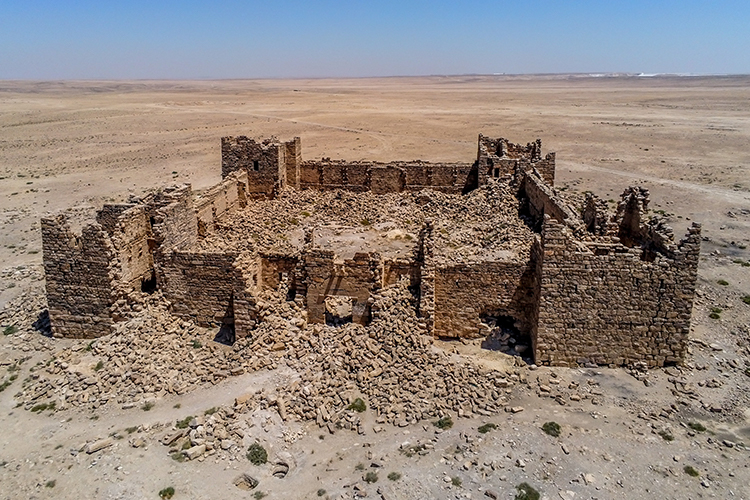
historyhit.com 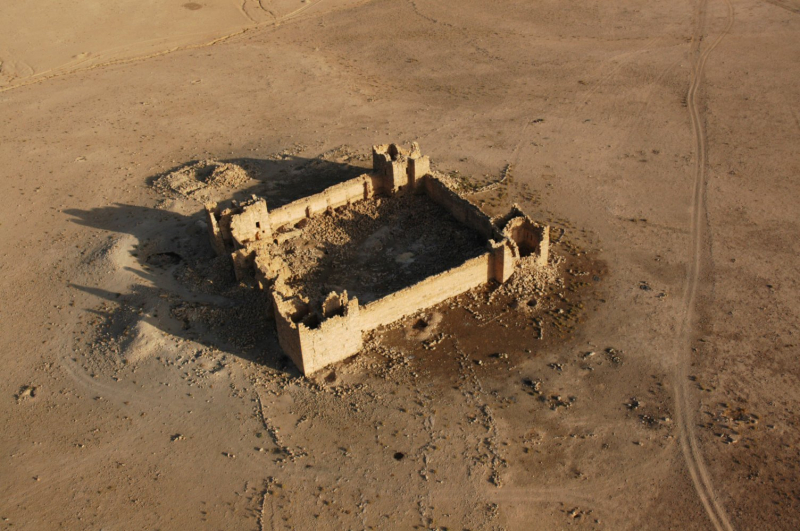
roger-pearse.com -
Umm Qais, also known as Qays, is a village in northern Jordan most known for its proximity to the ruins of an ancient Decapolis city, the Greco-Roman settlement of Gadara. It is among the most beautiful historical sites in Jordan.
Gadara, which was probably founded by the Greeks in the 4th century BC, was taken by the Seleucids then, in 63BC, by the Romans commanded by Pompey. It later fall under King Herod's jurisdiction.
Gadara was strategically located in ancient times, connected by a number of vital commerce routes between Syria and Palestine. It was endowed with good land and a plenty of precipitation. During Augustus' reign, this town developed academically as well, being known for its cosmopolitan culture and university scholars, attracting writers, artists, philosophers, and poets. For Christians, Gadara is also the location where Jesus is claimed to have performed the Gadarene swine miracle.
Today, Umm Qais retains Gadara relics such as a theater, churches, stores, a nymphaeum, spas, and paved roads. Many of the structures in Umm Qais, such as the theater, are formed of black basalt, which is an intriguing aspect of the sites. On top of the original Roman ruins, there are also Byzantine-era components. Umm Qais is also incredibly attractive, with the undulating hills of Jordan, Syria, and Israel surrounding it, as well as Lake Tiberias (the Sea of Galilee).
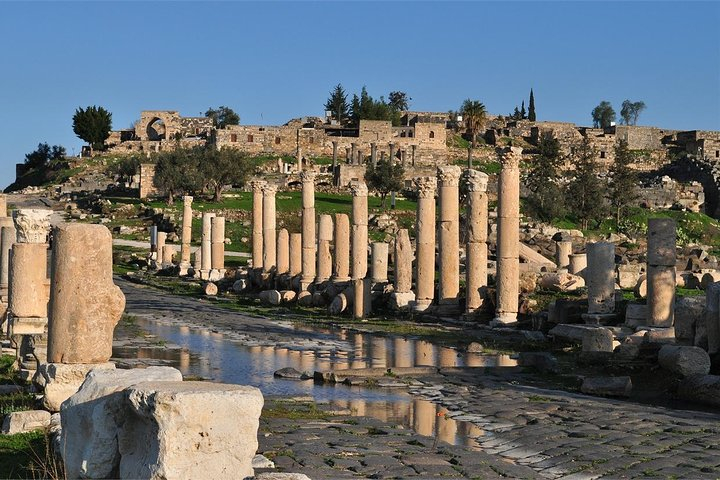
tripadvisor.com 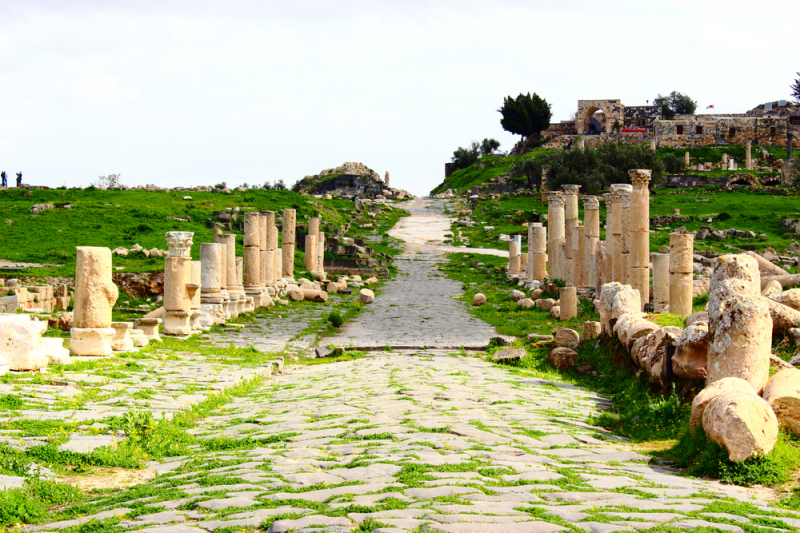
kaleela.com -
Qasr Amra (Qusair Fortress) is a Jordanian desert castle from the ninth century. The square-shaped Qasr Amra, which is listed on UNESCO's World Heritage list, is mostly gone, but its country house is extraordinarily well preserved, with many of its walls and even ceilings intact.
It is unclear who constructed the Qasr Amra. It is usually assumed that it was erected during the tenure of Walid I of the Umayyad Caliphate (705-715 AD), however other evidence suggests that it was built later, maybe between 743 and 744 AD, during the reign of Walid II.
The ruins of Qasr Amra's country house contain a reception room and a bath house or "hammam" that has been rebuilt and is painted with murals. These murals show diverse events and personalities, both actual and fictitious, from mythology, history, and philosophy. These murals are among the best of their kind and represent an early example of Islamic art.
Visitors can see the foundations of Qasr Amra itself. Qasr Amra would have served as both a stronghold and a retreat for the Umayyad caliphs. After falling into disrepair and being largely reclaimed by the desert, the remains were recovered in the late nineteenth century.
Despite the fact that only a portion of the castle remains, it is one of the best of its sort. It's open daily all year: there's a little tourist center at the entry, but the wonderful frescoes are what you'll want to spend your time looking at.
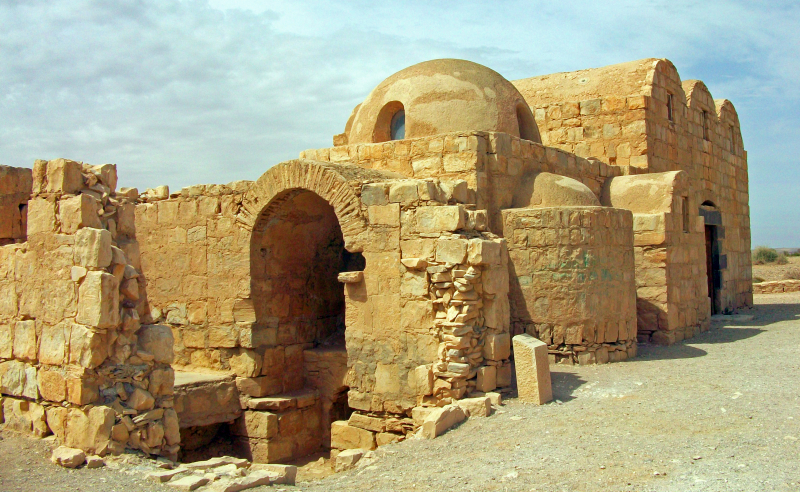
wikiwand.com 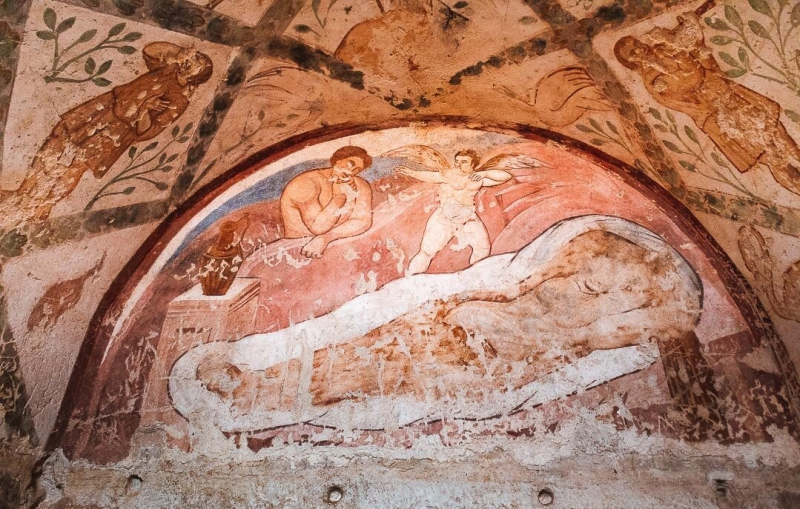
laidbacktrip.com -
Ajlun Castle, located in northwestern Jordan, is a 12th-century Muslim castle. Ajlun Castle, a large medieval castle commissioned by Saladin and erected by his nephew Izz al-Din Usama, was a stronghold designed to frighten the Franks. It is regarded as one of the most beautiful historical sites in Jordan.
While the crusaders in the Levant played cat and mouse with the mighty Saladin, his generals were preparing for war on their own terms — a campaign that would see the Franks crushed many years later in 1187 at the battle of Hattin. Arab military fortifications grew stronger throughout time, and Saladin worked hard to combine Muslim forces.
Ajlun, an enormous stronghold with a moat, drawbridge, and towers, was built in 1184 but lost much of its military value after the loss of Karak, a crusader stronghold in southern Jordan. The fortress, on the other hand, continued to monitor major trade routes into Syria and was thus never permitted to fall into disrepair, acting largely as an administrative center under Ayyubid and then Mamluk administration.
Ajlun would even play an important role in the wars between the Mongols and the Mamluk empire. The Mongol invaders occupied and seriously damaged the castle before it was regained by the Mameluk Sultan Baibars following the Mongol defeat at the historic battle of Ayn Jalut, where the astounding Mongol advance was ultimately beaten back.
Later, after the Ottomans established their dominance in the area, Ajlun Castle would continue to serve as an administrative center until the 19th century, when significant earthquake damage forced its closure.
A visit to Ajlun Castle now immerses guests in the culture of siege warfare and transports them back in time to one of the region's most catastrophic periods. The Ajlun Archeological Museum, housed inside the castle, also offers exceptional specimens of pottery and ceramics, as well as other displays and artifacts from the region. Visitors can encounter the local fauna in the neighboring Ajlun Nature Reserve in addition to the stunning views of Jordan.
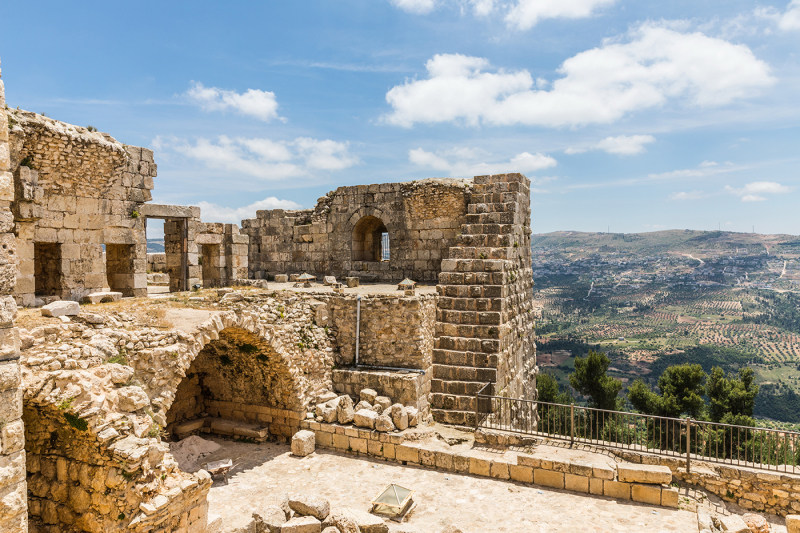
afar.com\ 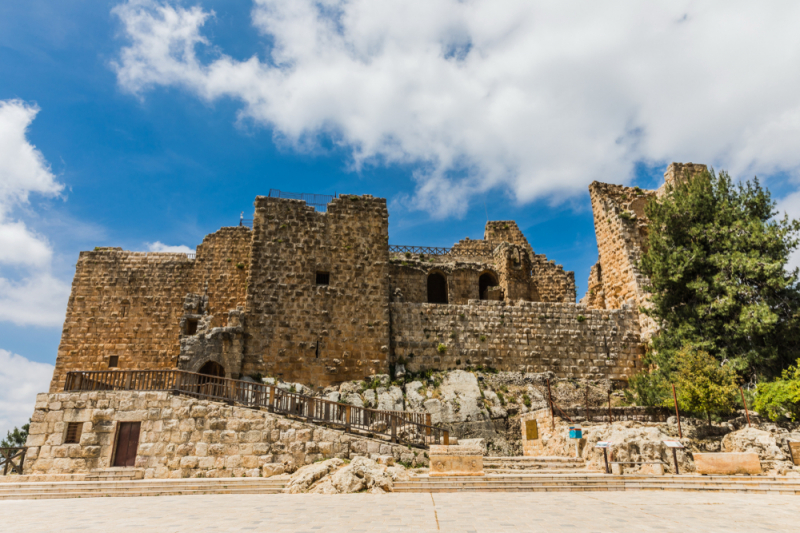
kaleela.com -
Kerak Castle is a magnificent Crusader-era fortress located south of Amman, Jordan, on the historic King's Highway. Today, the castle is a tourist attraction with a maze of hallways and chambers within the enormous walls.
Kerak, described as "the most magnificent, most impenetrable, and most famed of castles" by a contemporaneous adventurer, is recorded in the Bible, where it was supposed to have been besieged by the King of Israel.
The edifice that is seen now was built during the Crusades in the 12th century. Originally a Crusader fortress, the castle is located within Kerak's city walls and was built in an advantageous location 900 meters above sea level.
The castle is now a tourist attraction, with a maze of passageways and chambers within the massive walls. Kerak Castle is divided into seven floors, and visitors can explore vaulted passages and dungeons. A torch can be useful for traversing some of the smaller and darker corridors. There is an olive press and ovens in the castle kitchens, as well as a partially damaged chapel. A museum is placed on the castle's lower floor, and one route leads to the keep, which offers great views. On clear days, visitors may see across the Dead Sea and out to the Mount of Olives, which borders Jerusalem.
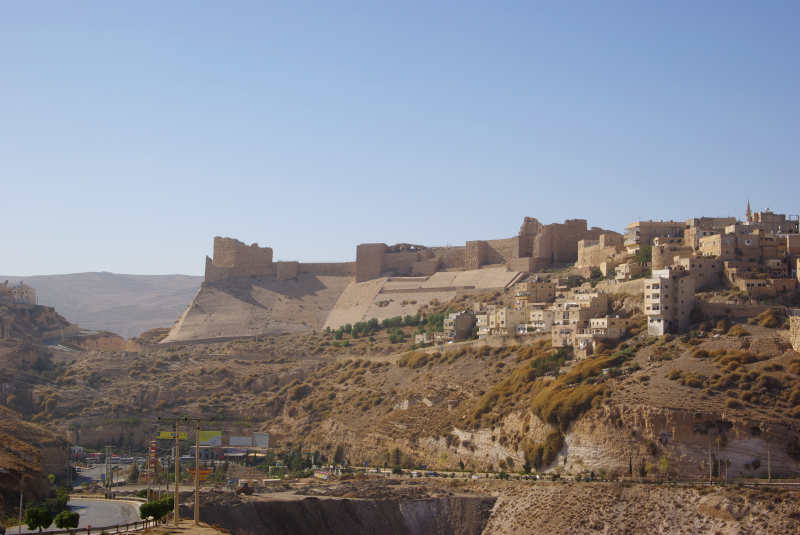
en.wikipedia.org 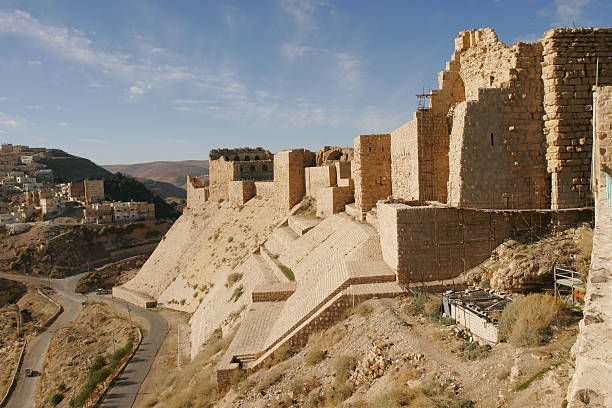
istockphoto.com -
The Church of Saint George in Madaba, commonly known as the "Church of the Map," is an early Byzantine church. It is among the most beautiful historical sites in Jordan you should visit.
This early Byzantine church in Madaba has the famous Madaba Map of the Middle East, a 6th century AD floor mosaic representing an area ranging from Lebanon to the Nile Delta, and from the Mediterranean Sea to the Eastern Desert. It is art history's oldest known geographic floor mosaic. It was most likely created by the Christian community of Madaba and includes a geographical picture of the Holy Land, particularly Jerusalem, which is the largest and most detailed portion in the center of the map. It faces east towards the altar, which corresponds to the compass orientations of the places.
Following conquests and earthquakes, the mosaic was rediscovered in 1884 during the construction of a new Greek Orthodox church, and was restored in the 1960s by the Volkswagen Foundation. Excavations in Jerusalem's Jewish Quarter in 1967 found the Nea Church and the Cardo Maximus at the precise positions represented on the Madaba Map. In 2010, the discovery of a road running through the middle of Jerusalem, as depicted on the map, demonstrated its accuracy and invaluable worth to archaeologists.
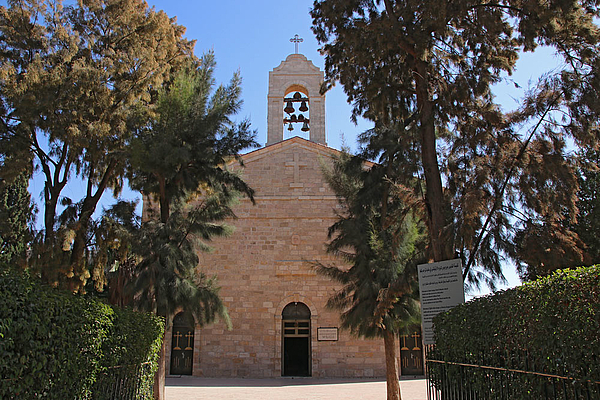
universes.art 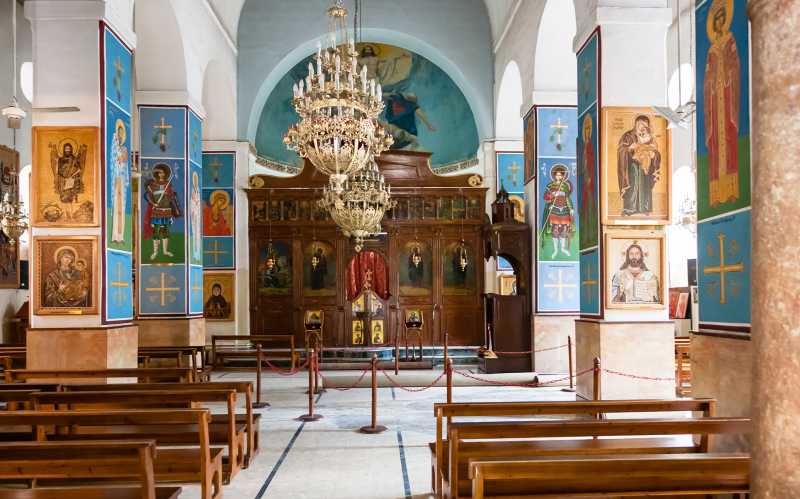
afar.com -
Abila, together with Philadelphia, Gerasa, Pella, Gadara, Kanatha, Dion, Scythopolis, and Damascus, formed part of the Decapolis, a ten-city Greco-Roman federation southeast of the Sea of Galilee in Jordan that served as a vital defense post protecting the Roman Empire's eastern front. It was occupied from around 6,000 years ago until approximately 1500 AD (although an earthquake in 747AD put much of the bustling city into ruins), and despite the fact that the site fell to ruin, some amazing finds have been made.
Archaeologists have painstakingly excavated Byzantine churches, an early Islamic monastic complex, Roman baths, a theatre, temples dedicated to Herakles, Tyche, and Athena, kilometers of subterranean water tunnels, aqueducts, megalithic columns, tombs, city gates, and different municipal buildings. Abila has been extensively excavated for about 40 years, but this site remains one of the most intriguing sites because much is only partially visible and has to be explored.
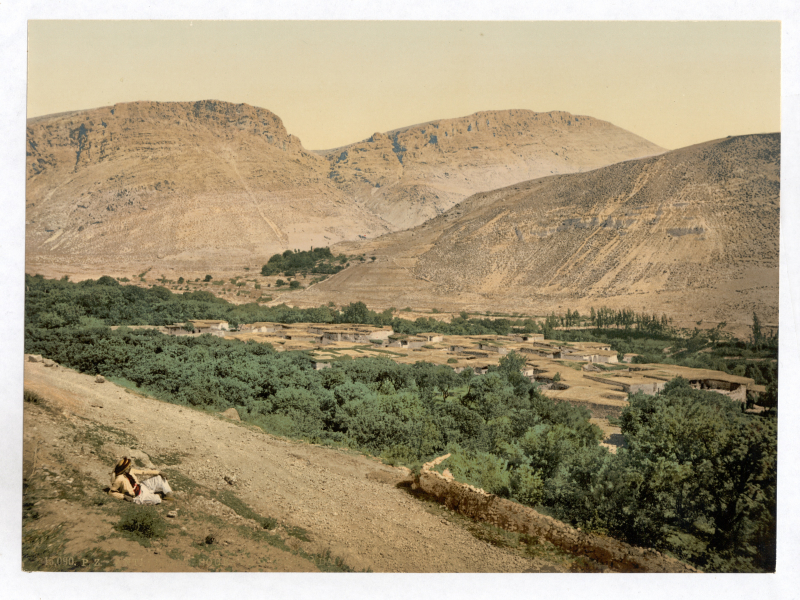
en.wikipedia.org 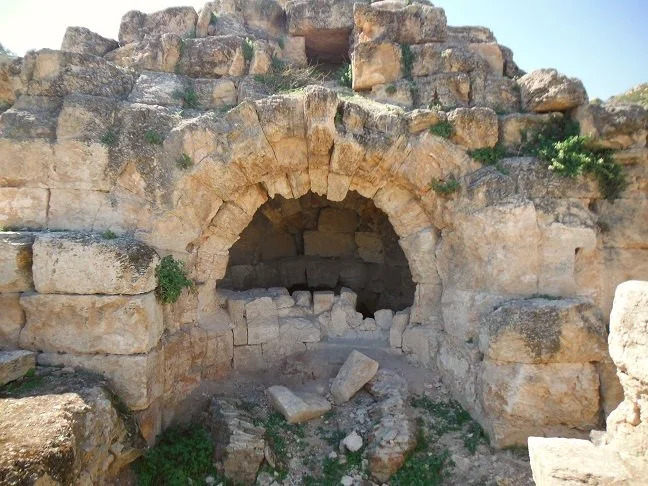
https://www.pathsofjordan.net/ -
The 6,000-seat Roman theatre in Philadelphia – now Amman – was built during the reign of Antonius Pius around 140 AD (though some sources claim it was during the reign of Marcus Aurelius). It is one of the world's best surviving examples of classic Roman amphitheatre architecture. The south-facing stage receives most of the day's sunshine, while the audience seating is shaded, and the acoustics are outstanding, and they are in practically all existing Roman theatre complexes.
The standard three tier layout meant the rulers sat on the bottom, closest to the action, the military and assorted dignitaries took the middle tier and the general public had to squint from the top. The theatre is still used for theatrical and musical performances, as well as other cultural activities. Commodus built the forum in front of the theatre, but all that remains are a lengthy Corinthian colonnade and some Roman paving stones. Visitors can also visit the rebuilt Odeon on the east side of the forum, which can hold 500 spectators, and the Nymphaeum, a 191 AD beautiful fountain devoted to the water nymphs.
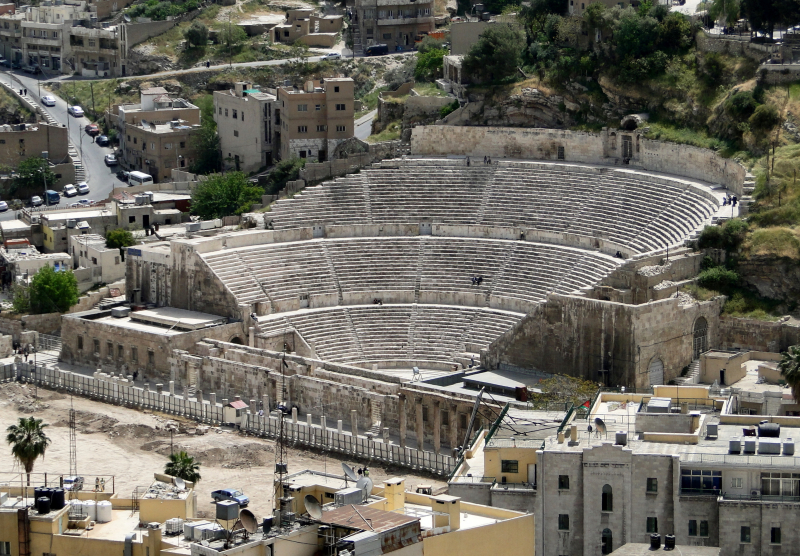
en.m.wikipedia.org 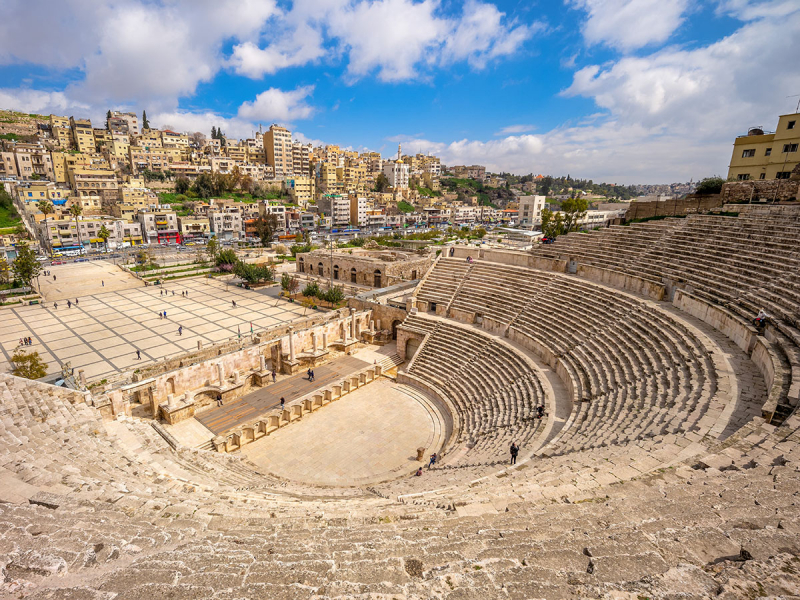
stepintojordan.com































